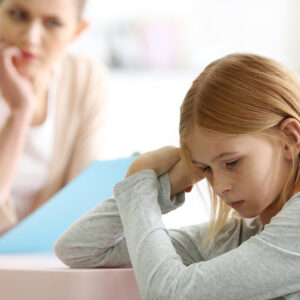Watching what happened to 15-year-old Russian figure skater Kamila Valieva in the Winter Olympics was heartbreaking. We saw a mental-health breakdown brought on by adults pressuring a child who probably shouldn’t have been allowed to compete.
As a young figure skater, I was coached by the late, great Ron Luddington, who took skaters to nine consecutive Olympics and 36 World Championships. So during the Olympics I didn’t see a young athlete who cracked under pressure in Beijing. After a rough performance, I saw someone whose coach greeted her with harsh criticism. I’m sure it wasn’t the first — or 100th — time.
That got me thinking about my daughter (who’s the same age as Valieva) and all the children coping with anxieties, feelings of helplessness, and the sense of isolation brought on by the pandemic.
The “America’s School Mental Health Report Card” survey released in mid-February by the Hopeful Futures Campaign says all 50 states struggle to help their schools deal with this crisis. Only Idaho and Washington, D.C., exceed the nationally recommended ratio of one school psychologist for every 500 students. Colorado, California, Washington, Illinois and Nevada were also highlighted for adopting different measures.
Research published in January by the Journal of Adolescent Health shows supportive relationships with family and friends. Healthy behaviors such as engaging in physical activity and better sleep appeared to shield adolescents from the harmful effects of the pandemic. And I wrote about the rise in student suicides in February 2021. The problem has only gotten worse in the last year.
These aren’t random one-off surveys. A recent Kaiser Family Foundation poll found that one in three parents believe their children’s mental health is worse today than before the pandemic, and a Harris poll released in February said a staggering 87 percent of Americans are concerned about the mental health status of young people, with two in three parents saying they’re “extremely” or “very” worried.
Here are four things we can do to focus on this issue:
—Invest more into school-based mental health support for kids. Each school district and state officials need funding for mental health education for students; training of teachers and staff; access to school counselors and psychologists; funding from Medicaid for eligible kids; development of partnerships with community mental-health professionals; and policies that foster a healthy school climate.
—Pay attention. Family and friends need to watch for warning signs such as openly suicidal statements such as “I wish I were dead”; changes in eating or sleeping habits; frequent or pervasive sadness; withdrawal from friends, family and regular activities; and frequent complaints about physical symptoms often related to emotions, such as stomach aches, headaches and fatigue. The experts’ advice: Talk about the coming day, limit screen time and pay closer attention to girls and children who entered the pandemic with existing mental health or sleep problems.
—Back off. We all want our children to be successful. Still, the high-profile examples of Valieva and U.S. gymnast Simone Biles show the danger of a win-at-all-costs mentality, but that also extends to the pressure parents put on their children with schoolwork, sports participation and other activities.
—Find ways to get children and teachers back in the classroom safely. This should not be a political issue, but it is fair that not being in school results in a lack of social interaction, greater chances of distraction and technology challenges, particularly among students in rural areas without broadband access.
More than 1,000 bills with the phrase “mental health” in either the title or summary have been proposed in the current session of Congress. Just 11 have been signed into law, with 83 having passed one chamber. The laundry list of mental-health provisions in the Build Back Better Act might be better cut loose from the bloated bill and considered separately.
The bipartisan Youth Mental Health and Suicide Prevention Act, which would authorize direct funding assistance to school districts for comprehensive student mental health promotion and suicide prevention efforts and expand funding beyond colleges and universities to K-12 school districts, is one of those bills.
Passing it would be a good start.

